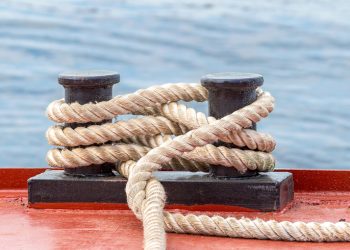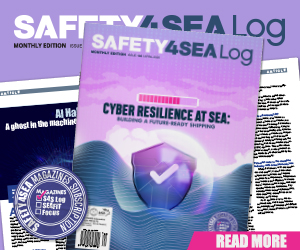The American P&I Club has issued a guidance that highlights the importance of indepth training, robust familiarity with the specific lifeboat onboard, and rigorous maintenance routines to ensure the safety and reliability of lifeboats.
There are several types of lifeboats used aboard ships, each designed to meet specific safety requirements. Open lifeboats, lacking a roof, are the most basic and least safe, typically propelled by hand-operated oars. Closed lifeboats, either partially or fully enclosed, provide a safer environment against harsh weather and rough seas, with the ability to self-right if overturned. Free fall lifeboats, similar to closed types but designed for rapid launching from a height, offer immediate deployment in emergencies and are highly reliable in all sea conditions. To aid mariners in understanding and enhancing lifeboat safety, the American Club recommends sticking to the following protocols and procedures:
Comprehensive training
Comprehensive training is critical to ensure all crew members are proficient in procedures for boarding, launching, and operating their lifeboats, regardless of the lifeboat design and release mechanisms.
Regular and realistic drills
Regular and realistic drills of various scenarios help to reinforce the crew’s operational knowledge and promote safety, confidence, and efficiency during actual emergencies.
Cross-Training
Cross-training facilitates the readiness of multiple crew members to competently conduct lifeboat operations, even during the absence or incapacity of key personnel.
Adherence to guidelines
Published guidelines and procedures should be meticulously followed as they will increase operational safety and boost crew confidence in lifeboat functionality.
Use of checklists
Detailed checklists should be implemented for every aspect of lifeboat deployment from launching to restowing. Checklists will help ensure thorough preparation and will help prevent operational errors.
Safety during drills
Safety should be emphasized during lifeboat training and drills. Correct safety and operational procedures should be repeatedly emphasized and practiced. As per IMO’s MSC.1/Circ.1277, Interim Recommendation on Conditions for Authorization of Service Providers for Lifeboats, Launching Appliances and on Load Release Gear, drills involving lowering and raising the lifeboat should only have as few crew members as are necessary to operate the boat.
Documentation of learning
Insights and lessons from both drills and real-life deployments should be captured to provide valuable feedback for continuous improvement. Maintenance and Inspections Regular Maintenance Maintenance schedules are prescribed by lifeboat manufacturers and should be closely followed. They will ensure that all mechanical and safety systems are in optimal working condition.
Thorough inspections
Detailed inspections should be conducted regularly and should go beyond superficial checks. They should include the lifeboat’s internal systems as well to help ensure they remain fully functional over time.
Vendor support
While external vendors play a critical role in maintaining lifeboat systems, crew involvement is essential for overseeing and validating the quality and completeness of maintenance work performed.
Furthermore, the American Club recommends asking the following questions to assess how well you know your lifeboat:
Do You Know YOUR Lifeboat?
- Have you thoroughly reviewed the operating manual for your lifeboat?
- Does your lifeboat have lashing or maintenance cables that require removal?
- Are there davit safety pins that are required to be pulled out to allow your davit-launched lifeboat to be lowered?
- Are there release hook safety pins that require removal on your davit-launched lifeboat?
- Is there a release hook safety pin that is required to be removed before your freefall lifeboat can be launched?
- Where is the battery charging cable connection to your lifeboat and how do you disconnect it?
- Should you put on your lifejacket before entering your davit-launched lifeboat? Your freefall lifeboat?
- Does your lifeboat have a drain hole that needs to have the plug inserted before launching?
- Does your freefall lifeboat have a safety pin in the release lever that is required to be removed?
- Where is the remote-control wire for lowering your davit-launched lifeboat from inside the lifeboat?
- On your davit-launched lifeboat, do you know how to operate the release hooks in both the offload mode (best in good sea conditions) and the onload mode (can be best in rough seas)?
- Should you use a painter on your davit-launched lifeboat? Your freefall lifeboat?
- Do you know where the painter release is located inside your lifeboat?
- Should you start your lifeboat’s engine before launching or after?
- Where is the emergency release located in your davit-launched lifeboat in case the primary release mechanism doesn’t work?
- Is there a bypass valve that needs to be closed or opened to enable your freefall lifeboat to launch?
- If your freefall lifeboat has a pump release, how many pumps before the lifeboat falls (or, how many pumps before you should be concerned if the release will actually work)?
- If the release doesn’t work on your freefall lifeboat, what is the emergency procedure?
- Do you know where the food, water, extra safety equipment, and first aid kit are stored in your lifeboat?
- When doing maintenance on your lifeboat, what safety pins and lashing should NOT be removed?
- Do the inspections on your lifeboat include the launching components or do they primarily focus on food, water, and safety gear in your lifeboat?
- After successfully launching your lifeboat in a real emergency, do you thank: • the lifeboat manufacturer; • the people who trained you to properly launch your lifeboat; • the people who did all the periodic maintenance and safety inspections on the lifeboat; or • All of the above?
- Have you checked the lifeboat boarding ladder?
- Is the rope free from rot, especially near the securing thimble?
- Is the anchor canvas in good condition?


































































































































